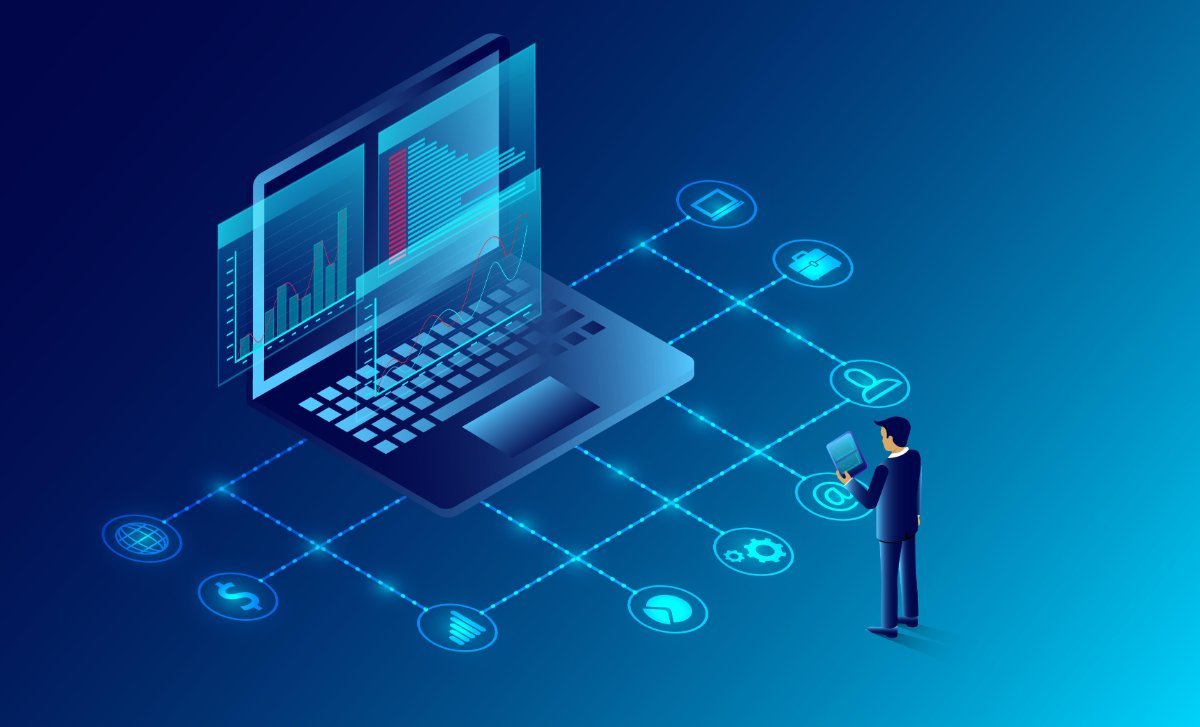Information systems are an inevitable and essential part of any company. These systems are commonly (and somewhat erroneously) too narrowly defined in terms of hardware, software, and data. The truth is quite different. An information system encompasses the ‘magic triangle’ of data, people and processes, mapping the relationships and interactions between each actor in the system. We can describe the triangle in more detail as:
- The flow of information (data) between users (people) and stores of information
- How this data is retrieved, shared, manipulated, stored, updated, and removed (processes)
It’s easy to see how the solutions that enable your organization’s processes don’t necessarily reply upon technology, although in truth, a modern business will deploy technology solutions for almost all aspects of their information systems, to take advantage of the benefits of speed, scale, and efficiency with components such as ERPs, CRMs, and OMSs.
A good example from history on the importance of a well-designed information system is Walmart. In the mid-1980s, they implemented a supply-chain management system that tracked inventory levels and sales information of their products at any of their ten thousand stores. With holistic monitoring of their entire stock and supply ecosystem, they added the ability to identify and act on issues quickly. The system could detect when stock levels showed indications of a product selling out, and preemptively send more supply, days before the inventory reached zero. With investment in modelling of their operations in an information system, Walmart gained agility and moved from being reactive, to a proactive operation.
Since then, information systems have drastically improved and with the development of the internet they’ve globalized. It has become possible to track any event at any given time, generating reports and displaying real-time dashboards of KPI data.
With the scale and complexity of data generated by the expansion and proliferation of new technology, it becomes imperative that any information system has to be exceptionally well-designed to ensure an organization’s optimal operating efficiency.
Improving and upgrading an information system can be a challenging task, involving modifying processes and changing long established routines, all of which can be frustrating for employees if the changes introduced don’t seem to take their work into account. It’s therefore essential that the digitization and digitalization of a company has to be designed and delivered in a way that leads employees embracing change, a better acceptance factor and more efficient work. With a well designed information system, organisations are ready to explore new business model opportunities to and achieve their full digital transformation.
Consider your answers to these questions in order to identify if your company requires an upgrade to your information systems:
- Are your employees happy with the software they use daily?
- What is the entry cost of onboarding a new employee: to train them in understanding the systems and processes?
- Does your organisation leverage all the value from the data you own in your current systems?
Large enterprise information systems often neglect the user experience focusing more on packing in large sets of information with little regard to how operators complete their task. At AlienGen, we design software that people love to use. We work with big corporations to help them evolve and grow their information system, with a focus on understanding the triangle of people, data and processes. Shoot us a message to discuss how we can help you.
